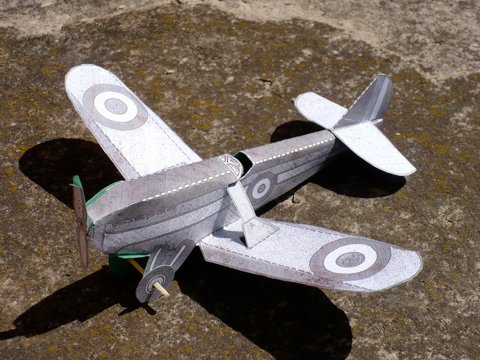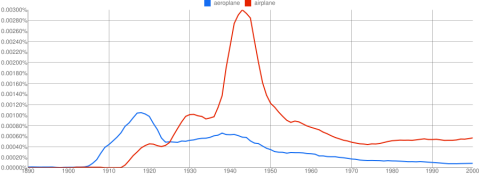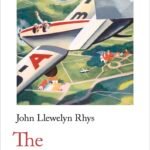
A belated Anzac Day post.
Willunga is a small town in South Australia, not far south of Adelaide, not far from the coast. It was settled by Europeans in 1839, only a couple of years after the colony itself was established. It was a farming area, cattle mostly, and slate quarrying soon became an important industry. By 1860, it had its own militia unit: the Willunga Rifle Volunteers (or Volunteer Rifles, or Willunga Company — the name varies from source to source). Why did a small country town need a defence force?
There are two reasons that occur to me. The first is, obviously, for defence. South Australia is a long way from anywhere, even the rest of Australia, so it’s hard to imagine anyone invading it. But turn that around: it’s precisely because South Australia was so far away from anywhere that South Australians felt the need to make some provision for their own defence. As a colony, South Australia was ultimately defended by Britain. But neither the British Army nor the Royal Navy had any units stationed there: the closest would have been in Western Australia or New South Wales (or, later, Victoria): a very long way indeed before interstate railways began to link up in the 1880s. (And even then each colony used its own gauge. The states still do.)
So as early as 1840 South Australia formed a militia force. As was the case in the mother country, however, enthusiasm for militias waxed and waned. Volunteer systems were disbanded when there was no plausible threat, only to be suddenly revived when a new international crisis came along, as they inevitably do. South Australia’s original militia soon fell into neglect, but a new force was raised during the Crimean War. That was disbanded at war’s end, but reformed in 1859. Further reformations followed in 1866, 1870 and 1877. Russia was seen as the main threat, as was the case for all the Australasian colonies. But other imagined dangers included Asian immigrants and revolutionary miners. (Aboriginal Australians, too, but by the time the Willunga Volunteers were formed, the frontier wars in South Australia were largely over.) The Willunga volunteers seem to have been disbanded some time in the 1870s, were reformed in 1885, and last heard of as a cavalry troop during the Second Boer War.
Obviously, the main target of any invasion would be Adelaide, the main settlement in the colony, not Willunga. But militia from outlying areas might have their part to play as reinforcements, as amateur strategists pointed out. The Willunga Volunteers seem to have taken their responsibilities seriously, judging from this 1861 account of one of their early battalion drills (together with volunteer companies from nearby McLaren Vale and Noarlunga.)
The battalion then broke into open column right in front, marching past in quick time. The Companies were then closed and the march past in close column was gone through and exceedingly well executed, the circle round the wheeling points being performed with much steadiness. Various battalion movements were then gone through, after which the Willunga Company was thrown out in skirmishing order, the other two Companies forming supports and reserve. The men went out with great care, steadily advancing and taking up the distance directed, the dressing and covering at the same time being well maintained. The skirmishers were then exercised in firing on the advance, and from the halt, and also in closing upon flanks and centre, both at the halt and on move. The old skirmishers were ordered to retire upon the supports; supports advanced and extended, closed and retired in succession, until each company had been exercised in every branch of this drill. The movements of forming, rallying squares, and squares to resist cavalry, were also gone through and well performed, the front face delivering a steady fire from the right. Independent and volley firing were also practised, and the latter branch of the platoon exercise was especially well done.
Of course, it’s hard to say just how useful such a force would have been if the Russians really had come. But that brings me to the second reason for Willunga’s defence force: building a community. This is hinted at in the rest of the article quoted above: more than half of it is given over to an account of the battalion dinner and ball held afterwards. Here’s a sample:
Captain Atkinson was now to receive the prize which he had so well won. He had given him (Col. Blyth) a good beating that day at a private match, but he was not at all sorry for that, as he rejoiced to see good attainments in any man. Private John Mudge, junior, of the Noarlunga Company, was also to be presented with a handsome silver prize cup. He hoped he would never want a bottle of wine to fill it.
Three hearty cheers were given for Captain Atkinson and Private Mudge, to whom the breech-loading rifle and the silver cup were presented. The prizes were then handed round for inspection, the cup having been previously filled with rosy wine.
Private MUDGE, sen., the father of the winner of the cup, rose and expressed the pleasure and pride he felt in having a son who could beat him. He had three sons volunteers, two of whom could beat their “dad,” but the third he could beat as yet. The patriarchal volunteer sat down amidst applause and sundry good-humoured jokes.
One toast proposed that
good harmony had hitherto prevailed amongst them, and he hoped it would continue, and that the good feeling which subsisted between the three companies might be promoted on every occasion when they met.
Clearly the militia force also performed a social role, as well as a military one. It enabled men to bond together, to display their prowess, to advertise their patriotism. Scores from their periodic shooting contests against other militia units were reported in the press as a cricket match might have been. Women could not directly take part in the militia movement, of course, but they too bonded over the Willunga Volunteers, as when they grouped together in 1860 to make a flag for the unit. On presenting the flag (‘of rich crimson silk; in the centre a shield of blue, with gold and silver bars, between which are stars representing the “Southern Cross,” with “Willunga” extending across the shield’), Mrs Henry Malpas said:
Captain Atkinson, and gentlemen of the Willunga volunteers, I am deputed by the ladies of Willunga to inform you that they — fully appreciating your noble conduct in coming forward in defence of your country — have taken the earliest opportunity of presenting you with a flag as a mark of their esteem and approbation. Gentlemen, although you are as yet unused to war, yet we trust that when your country requires your services in the field, you will be prepared to emulate the glorious deeds of your ancestors, who fought and conquered at Cressy, Ramilies, Salamanca, and Waterloo. We therefore deliver it into your hands, trusting that you will rally round it in the cause of liberty and in defence of your most glorious Queen and country; and may the God of battles give you the victory over all your enemies.
The Captain Thomas Atkinson (pictured above, ca. 1870) whom Mrs Malpas addressed, and who won the shooting cup in the battalion drill, was the commander of the Willunga Volunteers and also my third great-granduncle (his sister, Susanna Holman, is my third great-grandmother). He was born in Waddingham, Lincolnshire in 1822 to a farming family of some means (his older brother went to Rugby; their farmhouse at Snitterby is Grade II heritage-listed). Emigrating to South Australia at the age of 17, Thomas and his brothers were among the first settlers of Willunga in 1839. They started its first inn (initially called the Lincolnshire House, later the Bush Inn), and later on a bakery and general goods store, a slate quarry and a farm, Ashley. Thomas in particular seems to have been particularly community-minded, as his obituary notes:
He was one of the first Road Commissioners in Governor Young’s time, and was a member of the district council for 28 consecutive years. In July, 1898, he retired from municipal affairs, his services being, at that time, recognised by the public presentation of an address. He was elected to Parliament as the representative of Noarlunga in 1878, but although his knowledge of the country was wide he was known in Parliament as “the Silent Member.” He was a member of the Royal Agricultural and Horticultural Society, and was a committeeman and judge of horse stock for 14 years subsequent to 1850. Mr. Atkinson represented this State at the Melbourne and Sydney exhibitions, and was also a member of the local school board of advice. He took a keen interest in volunteer military movements, and in 1860 was appointed captain of the Willunga Rifle Volunteers, becoming in 1893 honorary captain of the Mounted Volunteer Force.
From this point of view, to take command of the local militia seems less like an expression of the fear of invasion than it does simply another one of the duties of the local gentry, much as it was back in his native Lincolnshire. There must have been many such people in early White settlements who took on such burdens, because that what was needed in order to build a community. (Of course, it added to his honour too: Thomas seems to have been almost universally referred to as Captain Atkinson.) So it seems to me that these types of social considerations should be given as much weight in explaining the Willunga Volunteers as we might give to the more familiar strategic reasons.
Image source: Onkapringa City Libraries.
![]() This work is licensed under a Creative Commons Attribution-NonCommercial-NoDerivatives 4.0 International License.
Permissions beyond the scope of this license may be available at http://airminded.org/copyright/.
This work is licensed under a Creative Commons Attribution-NonCommercial-NoDerivatives 4.0 International License.
Permissions beyond the scope of this license may be available at http://airminded.org/copyright/.






Hi Brett,
This passage gives an additional clue. ‘Gentlemen, although you are as yet unused to war…’ This was a commercial and democratic society, very consciously created on the idea of the greatest happiness. SA was a Benthamite experiment, and Benthamism deliberately turned its back on the militarism of the stoic and aristocratic society of Europe. But what of self-sacrifice, what of the military arts in a society ruled by commerce and self-interest? Fenelon had asked the same question in 1699, concluding that such a society would be harder to beat than a military one. But the matter was untested. Part of what is going on, I suspect, is a preservation of, and something of a rewriting of (note the informality and conviviality) an older military tradition that had preserved Britons in the past. Of course the matter never really got its conclusive answer until Gallipoli.
D
That’s very interesting, David, thanks. On that basis, would you expect significant differences between South Australia and the other (non-Benthamite) colonies with respect to motivations for setting up militias? Not that I know if there were any or not!